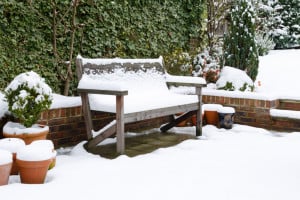Tips & Tricks: Keep Potted Plants Safe All Winter
During the winter, plants tend to fare better when planted in the ground as opposed to left out in a planter. Although, this is only true if one fails to take the proper precautions when it comes to protecting potted plants in the winter. It’s normal to lose a plant or two throughout the brutality of cold storms, but what surprises many first time gardeners are just how many of their plants actually survive to bloom in spring. Here are 5 ways you can proactively protect your landscaping no matter how fierce winter storms are in your area.
1. Know How To Identify Hardness Zones
Hardiness zones are a huge aid to the gardening community; they allow much of the estimation to be relieved from planting new greenery. Instead of hoping that a certain plant will survive in the weather conditions in your area, you can check on a map and actually identify what ‘zone’ your geographical location is rated. Flowers have zone ratings of their own, in accordance to the weather they can withstand. To keep your potted plants alive all winter make sure they have a USDA Hardiness zone that is rated 2 digits lower than the hardness rating your particular area is assigned. For example, if your city is rated as a Zone 5, look for plants that that are labeled as Zone 3.
To provide answers for which hardness zone you live in, the USDA routinely updates their Plant Hardiness Zone Map in accordance to the average temperatures recorded over a 20-year period. Of course, hardiness zones are not the only thing to consider, the type of soil, amount of sunlight and shade, and proper care can have a huge impact on how well your landscape thrives. Also, microclimates are important to keep in mind, as certain areas can have different average temperatures than nearby locations because of proximity to the ocean, elevation levels, etc. Standard hardness zones range between a Zone 1 and a Zone 11. Zone 1, includes climates that reach -50 degrees below 0, while Zone 11 includes climates that don’t dip below 40 degrees all year; the higher the zone, the warmer the weather will be. Discover More.
2. Provide Warmth to Your Potted Plants
If you were going to be left outside all winter you’d need as much protection from the elements as possible, a way to lock some heat in around you. This is exactly what plants need too, therefore the more soil that they have the more insulation you are providing to the roots. Once the soil is frozen, use 2-4 inches of bark or leaves to cover it, an added layer of protection. This will also prevent an overabundance of water from flooding-out the plant and eroding it, while simultaneously robbing it of vital nutrients. For even more plant security, you can place smaller containers into larger containers that are then packed tightly with soil.
3. Provide Shelter to Your Potted Plants
Your potted plants will do best in the winter if they are not left out completely in the elements. When the first hint of frost settles down, it’s time to move or cover potted plants. If possible, relocate pots into a covered location, and group them close together for extra warmth and protection. How to provide plants shelter without moving them, plant a ring of chicken wire around the perimeters of any potted plant, then fill this up with leaves or mulch. You can also use an old window or glass pane to place over the top of a plant, use bales of hay on either sides of the pot to brace up the glass. If it gets hot it will get really hot under this glass, so be mindful of weather changes and make sure to remove the glass on warm winter days. Additional Tips.
pane to place over the top of a plant, use bales of hay on either sides of the pot to brace up the glass. If it gets hot it will get really hot under this glass, so be mindful of weather changes and make sure to remove the glass on warm winter days. Additional Tips.
4. Too Much Is Never a Good Thing
At the end of fall don’t feed your plants any fertilizers that are rich in nitrogen, this can cause sappy growth to occur in the winter. Instead, start focusing on ways to keep the nutrients in the soil protected, otherwise exposed soil can rapidly erode and loose nutrients. Potted plants also need an adequate form of drainage to prevent the plagues caused by continuously wet soil, including rendering a minor windstorm capable of uprooting trees and plants.
5. Remove Snow From Potted Plants
Perhaps it’s too cold to garden outside right now, but keep an eye out on your plants to prevent permanent damage from occurring. If you see snow accumulating on the branches of any plants, make sure to take the time and remove it. Otherwise, this snow can freeze a plant’s limbs so that they become fragile and brittle, easily snapping off into disrepair.

